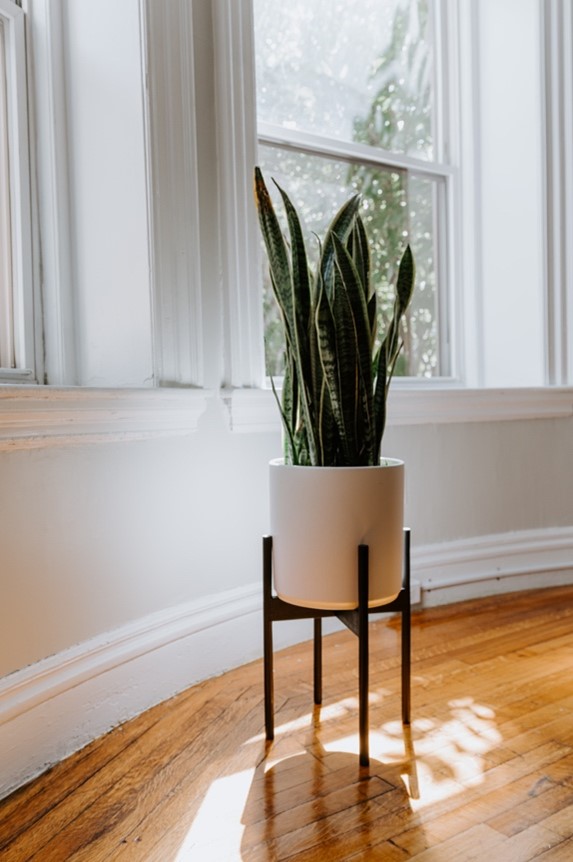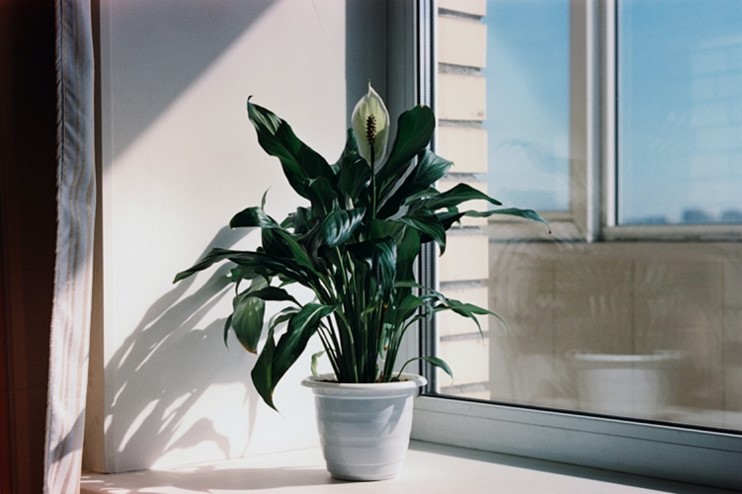Not only do indoor plants create a nice visual environment, they’re great because you can take them with you when you move house or into a new rental. Indoor plants are suitable for all homes, but especially apartments and units where there’s no (or limited) outdoor space.
Whether you own or rent your home, most of us are guilty of killing an indoor house plant at some point. Despite what anyone promises, no plant is indestructible, but certain species are famously hardy, low maintenance, and easy to look after. Here are our top five favourite indoor house plants, along with some care tips for each. After you read this quick guide, you’ll enjoy a thriving indoor garden in no time!
Pothos varieties.

Thanks to an undemanding plant personality, the pothos plant is considered by many as an ideal “entry-level” plant. Lush with a variety of green shades available, pothos is guaranteed to brighten your home. Varieties under this umbrella include Golden Pothos, Queen Marble Pothos, Neon Pothos, and many more.
Pothos plants look great on shelves and windowsills, can be trained as a climbing plant, or potted in a hanging basket where their tendrils can flow down and become a focal point of the home.
Pothos plant care.
These plants enjoy bright, indirect light, but can manage in low light conditions as well. They can be grown in pots or as water-plants in nothing but a vase and water (yep, no soil!). They do best in nutrient-rich soil and we recommend using a natural indoor plant potting mix (which you can pick up from any Bunnings or plant nursery).
In Perth, these plants become dormant in winter. They’ll still look great, but most likely won’t produce any new growth for a few months. In the summer, a healthy plant with multiple strands will enjoy new leaves every week. Water once a week in summer and once every 2 – 3 weeks in winter, or when you notice leaves become droopy.
These plants should be repotted every 1 – 2 years. If they become pot-bound, their once-green leaves will become yellow so this is a good indicator that it’s time to upsize the pot and add some fresh soil.
Snake plant.

By far one of the toughest houseplants, the snake plant is ideal for even the most notorious plant killers. One of its most intriguing traits is that it has no stems, only rigid, vertical foliage. This makes for a striking architectural display wherever it’s placed in the home.
You’ll often find them at nurseries starting from just 10cm. When cared for properly, they can grow to one meter tall. Like the pothos, there are a few different varieties of snake plant. The most common type is simply called a Variegated Snake Plant and showcases green leaves with “silver-grey” horizontal streaks (as pictured above). Other varieties like the Laurentii Sansevieria are easily recognisable by their gold-coloured edges.
Many people are surprised to learn that snake plants can flower. However, its’ extremely rare, only happening every few years and seemingly at random! If you’re lucky enough to have a snake plant that blooms, you’ll enjoy white tubular flowers in clusters. These small flowers emit a sweet fragrance — a scent that’s particularly strong in the evenings.
Snake plant care.
Like most indoor plants, snake plants do best in bright indirect light but they’re particularly hardy when it comes to low light conditions. The snake plant can also tolerate dry soil (for those of us who often forget to water plants) and sails through hot and cool weather.
The main killer of snake plants is over-watering — these plants are designed for droughts. As such, they need a well-draining potting mix that doesn't hold a lot of water. You can water them as little as every two months in winter, and about once a fortnight in summer.
Monstera.

Also known as the “Swiss Cheese Plant”, monsteras just scrape into our list as they sit on the outskirts of easy-care. They’re famous for the jungle-esque aesthetic they bring to the room and can become monstrous in size (in the best way!). In the wild, monsteras are a tropical climbing plant. They use “aerial roots” to help them climb towering trees and can be as tall as 30 metres. As an indoor plant, they’re of course limited by pot size. However, in a very large pot and with a secure climbing pole, they might grow as tall as 4 – 5 metres.
Monstera plant care.
While these plants can be considered easy-care, they’re not really low maintenance. Everything you need to do to care for a monstera is easy — it’s just a lot of little things that add up. For one thing, their broad leaves have to be wiped down, ideally once a week, to prevent dust from settling on them and help keep them shiny. Lightly misting the leaves between waterings also helps replicate that jungle environment they love.
Any aerial roots that appear should be positioned onto a climbing frame or encouraged to grow down back into the soil. If you get really into monstera care, aerial root care comes into a league of its own — you can find more info here.
Soil should be kept moist but allowed to dry out between waterings to avoid root-rot. However, once or twice a year, they’ll love a good soaking, also called “bottom-fed watering”. This mimics the effects of a torrential downpour they would get in their natural rainforest environment. To do this, submerge the lower portion of the pot in a sink or bathtub so the roots can soak up the water directly, as opposed to it running down from the top of the soil. Leave it for a few hours or even a full day. If your plant is drooping or the leaves are starting to brown, a soaking is often the solution.
Speaking of browning leaves, the brown or yellow sections can simply be snipped off with scissors. This saves you from having to prune away the entire leaf. You can even shape it so that the removed portion isn’t even noticeable. No one will ever know…
Finally, monsteras don’t do well in very cold indoor environments, so if your home is freezing in winter, it might start to die off.
Peace lily.

A healthy peace lily delivers dense, full foliage along with the occasional white flower. The pure white blooms are beautiful against the plant's deep green leaves. If you continue repotting as needed, they can grow up to 1.2 metres.
Despite being very delicate, they basically only need regular watering to stay happy, making them exceptionally low maintenance. Although they can’t be considered “hardy”, they can be brought back from the brink of death (but hopefully it won’t come to that).
Peace lily plant care.
As long as you remember to keep watering your peace lily, you two will get on fine. Peace lilies are very dramatic when they haven’t been watered and will become noticeably floppy when they’re thirsty — even after a few days. Their water intake can be temperamental and depends on where you place them. Some demand to be watered every 3 – 4 days, others seem fine with a water every 7 – 10 days. In saying that, they tolerate under-watering more than overwatering. Confused? Don’t worry, you’ll quickly get to know your peace lily’s “personality” and how often they like to have a drink.
Peace lilies need bright indirect light — full sun will quickly burn the leaves, and low light will result in a droopy plant.
ZZ plant.

There’s a reason the Zamioculcas Zamiifolia (ZZ plant) is nicknamed “easy ZZ” — it’s probably the lowest maintenance, toughest houseplant there is. Small ZZs look great on a shelf or desk, larger plants make a statement on plant stands or in large floor pots. With small glossy leaves on long stems, this plant can grow up to one meter as an indoor plant. In particular, Raven ZZs are growing in popularity — they’re loved for their dramatic almost-black leaves that create a focal point for any room.
ZZ plant care.
ZZ plants are perfect for homes with low light. Although they do better in bright light, low light isn’t a problem for them — they’ll just grow a little slower. These plants are also drought tolerant and only need to be watered every 2 – 3 weeks. Some people can even leave their ZZs for a month or two between waterings! A good rule to remember is light and water go hand in hand for these plants. Low light means less water, and bright light means more water.
Fertilising indoor plants.
Fertilising plants, including indoor ones, is an excellent way to keep them healthy, green, and full. For flowering plants, like the peace lily, fertilising also promotes floral growth and health. If the thought of fertilising your indoor plants sounds like too much work, first of all, it’s not compulsory and your plants will probably trot along okay with being fertilised. Secondly, it’s probably way easier than you think, especially if you find the right product.
Most indoor plant novices are amazed at how much of a difference a little fertiliser can make. We recommend a liquid fertiliser solution made for indoor plants, like Seasol. Seasol is a fan favourite because you can just get it from your local supermarket, it lasts ages, it’s naturally formulated, and it’s affordable (about $5 – $10). As a slow-release fertiliser, you only need to use Seasol on your indoor plants every 2 – 4 weeks. A few small sprays and you’re done. No messy bags to spread out, no need to wear gloves, and no toxic chemicals.
Powered by ReNet - Software designed by Real Estate Agents, for Real Estate Agents